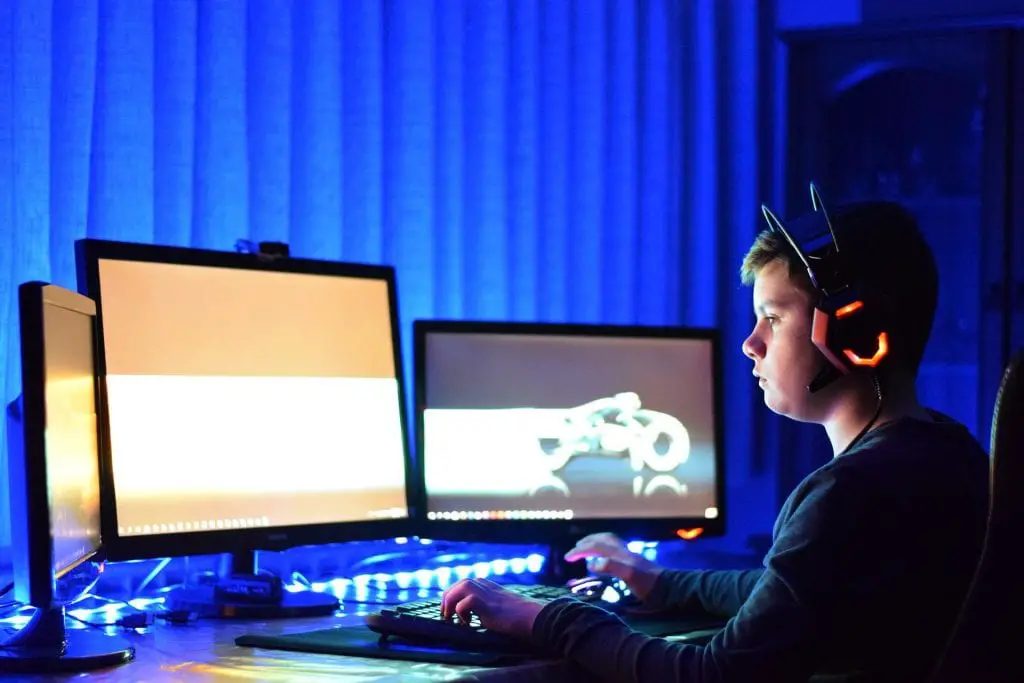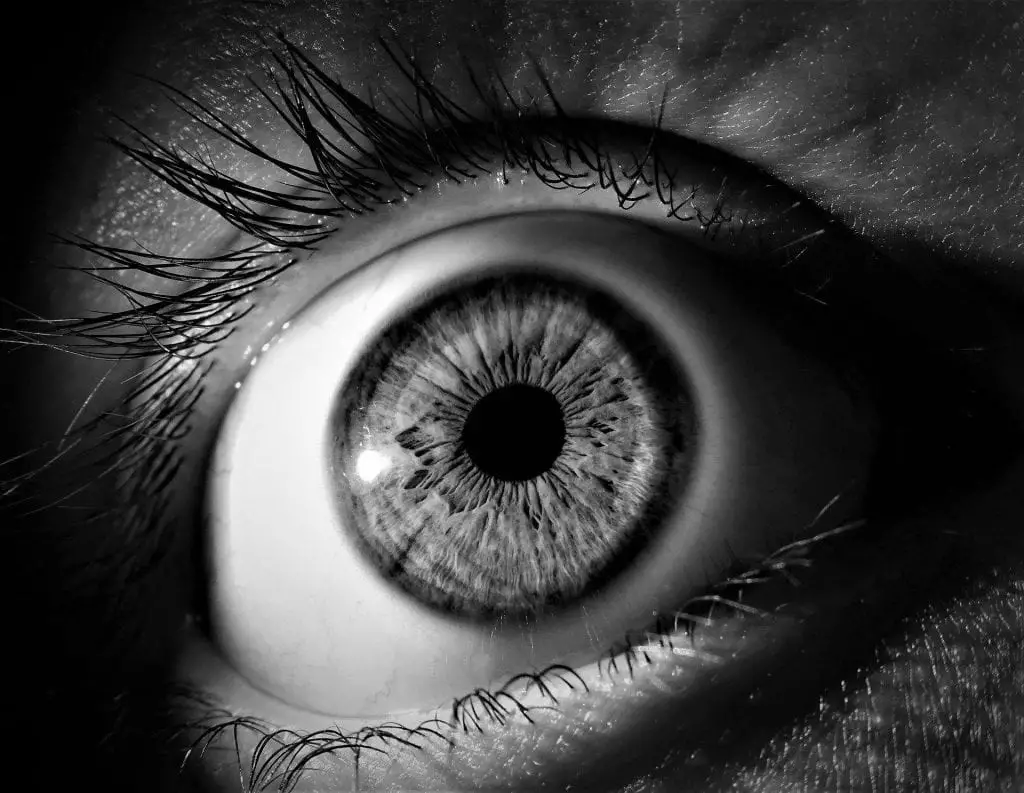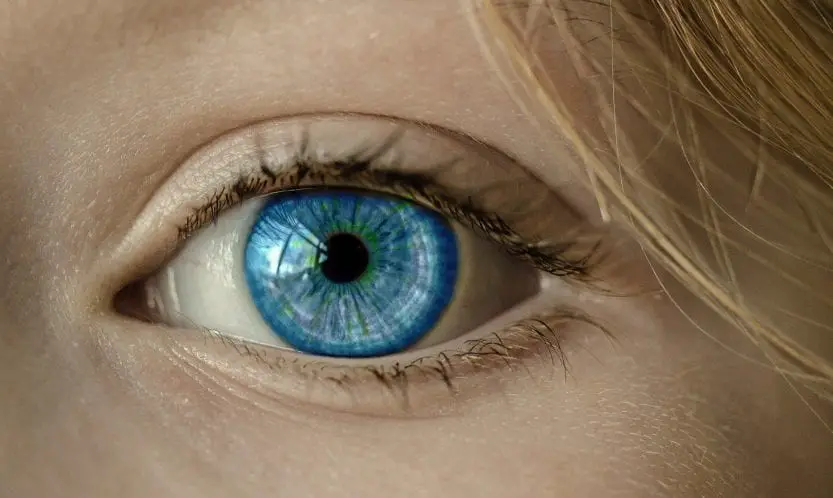Blue light is all around us. It’s in our environment, even in our smartphones and TVs. We love the convenience of the technology that gives us access to everything at any time, but there are concerns about its potential effects on our health.
You are not sure about the myths regarding the effect of blue light on the human body. Blue light is one of the many reasons behind the appearance of different colors.
Find out more about why blue light has a major role in human vision.
What is blue light?
Blue light is a primary component of sunlight. It exists in addition to other colors such as red, orange, yellow, green, indigo, and violet.
Blue light is found in a narrow range of wavelengths centered around 320 to 380 nanometers (nanometers are one billionth of a meter). It interacts with the retinal pigment epithelium to produce melanin in the rod and cone photoreceptor cells that comprise the rods and cones. This photo pigment is the basis of the human visual system.
Blue light is responsible for a wide variety of visual phenomena such as blue sky, blue water, snow, and the appearance of many colors.
Blue and other colors together make up the white light. The sun is the main source of blue light. Fluorescent and LED (light-emitting diode) light bulbs also radiate blue light.
When any object appears blue, it means it absorbs a blue light- wavelength light that is reflected or transmitted.
If you flash a blue light on a red object through a blue filter, the blue light is absorbed. The light is not reflected back, giving the object the appearance of being black.
Similarly, when blue lights are shone on blue objects through blue filters, the objects reflect blue lights and appear blue.
Blue objects also absorb heat. Darker colors absorb more heat as compared to lighter colors. An object that is navy blue will absorb more heat than an object that is a lighter shade of blue.

Facts about Blue Light:
Blue light isn’t all bad.
It can help us perform tasks and remember information more effectively and is associated with certain physical and psychological health benefits. However, over-exposure can cause digital eye-strain.
Let us take a closer look at some facts associated with blue light.
Blue light plays a critical role in regulating our body clock or the circadian rhythm. With limited exposure, it can help increase cognition, alertness, and even sleep quality.
Blue light can help treat cancer lesions.
Excessive exposure to blue light can turn off the body’s melatonin production, which reduces sleep quality.
Blue light exposure causes digital eye strain and can cause symptoms like burning, dry eyes, blurred vision, and headaches.
It is also linked with chronic diseases, such as cancer and diabetes. As of now, however, there is no established link between health issues and exposure to blue light at night. Studies conducted by researchers have been significantly on a minute scale and hence may not be considered conclusive.
Myth 1: Blue light can kill you. Well, cause blindness.
A common fallacy is that exposure to blue light from digital devices can cause blindness.
There is no evidence that blue light can cause blindness, nor does the amount of blue light people are exposed to have any effect on their eye health.
One study found that low-level blue light exposure during the day (i.e. from screens and printed material, including websites) had no effect on macular degeneration.
The more worrying side effect of blue light is its role in disrupting the circadian rhythm.
This is a process in our bodies that helps our brains and body adapt to different time schedules, leading to better sleep, less stress and improved mood. Blue light signals to our bodies to stay awake during the day and to sleep more at night.
Myth 2: Blue light limits your day.
It’s often said that blue light shuts down the body’s systems in the evening, leaving us unable to sleep.
This is untrue.
Blue light from screens can have effects on our body when we are awake too, but this is the issue with using digital devices late at night.
For example, during a study of students’ sleep habits, those who used digital devices before bedtime had reduced sleep duration. In the evening, it is important to avoid screens at least two hours before bedtime.
This is why educational apps are now available that prevent your phone from turning on in the bedroom – the light is designed to suppress blue light before bed.
Myth 3: Blue light limits fertility.
Although blue light can cause problems for your circadian rhythms in the evening, it can also interfere with a couple’s ability to have a baby.
Some research suggests that when couples are exposed to red light (such as from a red LED candle), the amount of red light reaching the sperm increases.
If this is true, it could improve the quality of a man’s sperm by affecting the mitochondria in the sperm. In turn, this could help the sperm survive longer in a woman’s body.
However, the body undergoes several changes during pregnancy, which can affect sleep patterns and cause anxiety and insomnia. Limited exposure to blue light is fine since it helps to improve alertness, memory and cognition.
Couples should keep this in mind to reduce the amount of exposure to blue light from devices.
Myth 4: Blue light is bad for your eyes.
On a personal level, light is important to how we feel. It can either stimulate or inhibit our emotions, depending on the color. Research studies have shown that being exposed to blue light for just three days makes people feel sadder and depressed, and that blue light reduces these feelings.
A similar effect was found for green light. It has also been found is that blue light affects the brain’s dopamine pathways in a negative way.
This is important as dopamine is important for a range of positive psychological effects such as improving your mood and motivation. It is also linked with the growth and repair of new brain cells.
Myth 5: Blue light is a chemical.
Some have argued that blue light is a chemical, but it is not. It is a radio wave.
This means it travels in a shorter distance and through the air, compared with a microwave or a light bulb, and is therefore, able to travel further. However, since blue light travels through the air, and we cannot see it, it is easier for us to block.
For example, a blue light filter may look like a standard light bulb but is actually placed behind the light to block blue light. This filter is usually removable and many have a diffuser to reduce blue light even further.
So while blue light has some disadvantages, it is certainly not a chemical and the amount we receive from our devices shouldn’t cause any damage to our health.

How To Avoid Blue Light Damage:
Use shades – Exposure can happen at any time of day, as early as the morning. When sitting under bright, white LED lights, use shades to block out the glare.
Use blue-light-blocking glasses while using the laptop, smartphone, tablet, or other electronic devices.
Use app timers. Most smartphones come with the app timer feature, which allows you to limit the amount of time you spend on your device on a given day. Primarily designed to improve focus and productivity, it can also be a helpful aid to limit your over-exposure to blue light.
Get a comprehensive eye check. You can also talk to your doctor and get protective lenses with blue light filters to reduce exposure to blue light. There are exclusive glasses made with the latest technology to filter out blue light and thus reduce exposure to HEV (Blue Light).
Use screen filters that are designed specifically for PC screens. It is also a good idea to use natural sources of this light by getting outside in sunlight or checking your email through a browser that is optimized for reading.
F.lux is a good alternative to manipulate the blue light emanating from your device.
Take a break. When you are using your PC or a similar device, you should take breaks now and then. This is because the unnatural light from the screen is not good for your eyes. We usually have breaks when we are watching television.

There are three main types of cones in the human eye- short (S), medium (M) and long (L). The functions of all three types of cones are to help us to see in different light conditions.
As we spend more and more time with screen devices, our eyes are being exposed to artificial light. This can damage our vision and interfere with melatonin secretion at night – which can affect sleep quality.
An integrative approach will help you manage blue light exposure more effectively so that you can do your work comfortably.
You can sit back to relax or unwind at night without unnecessary impact on your vision health, while still experiencing all the benefits.



